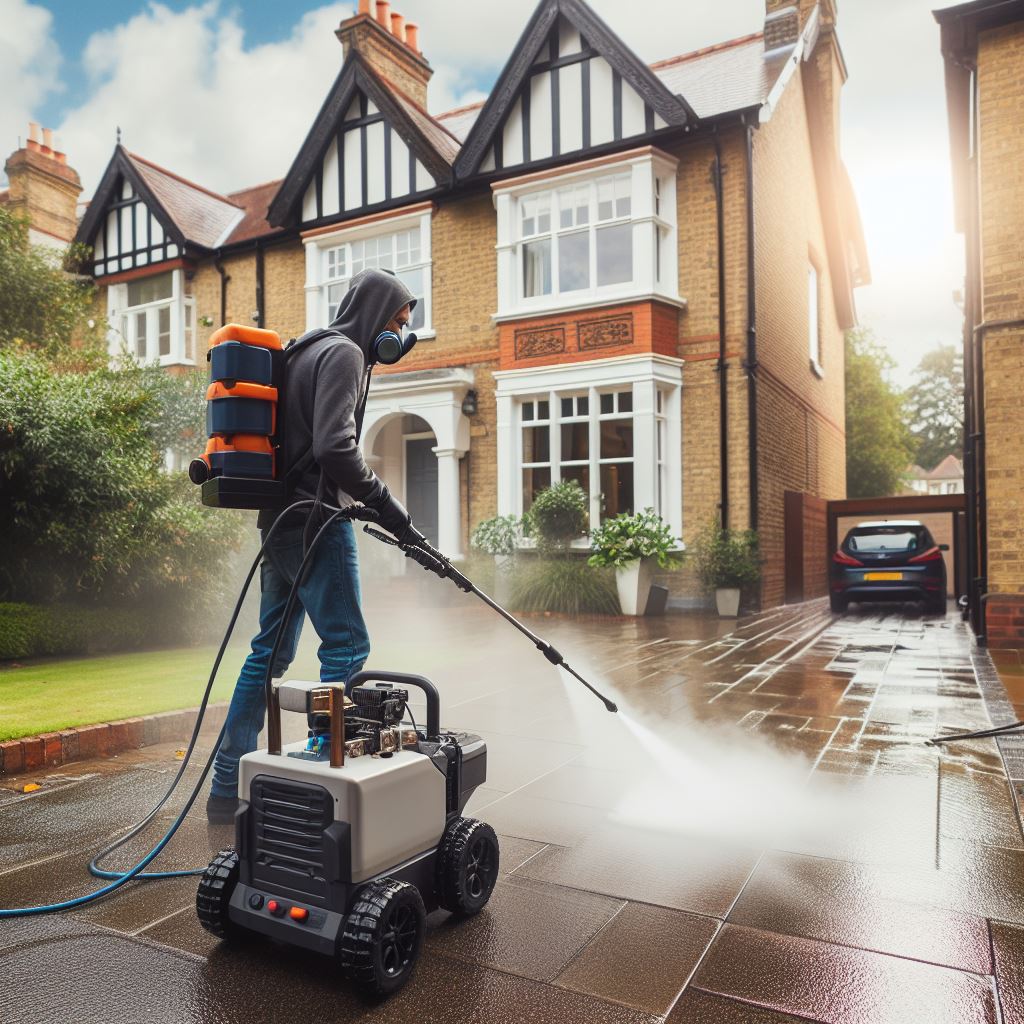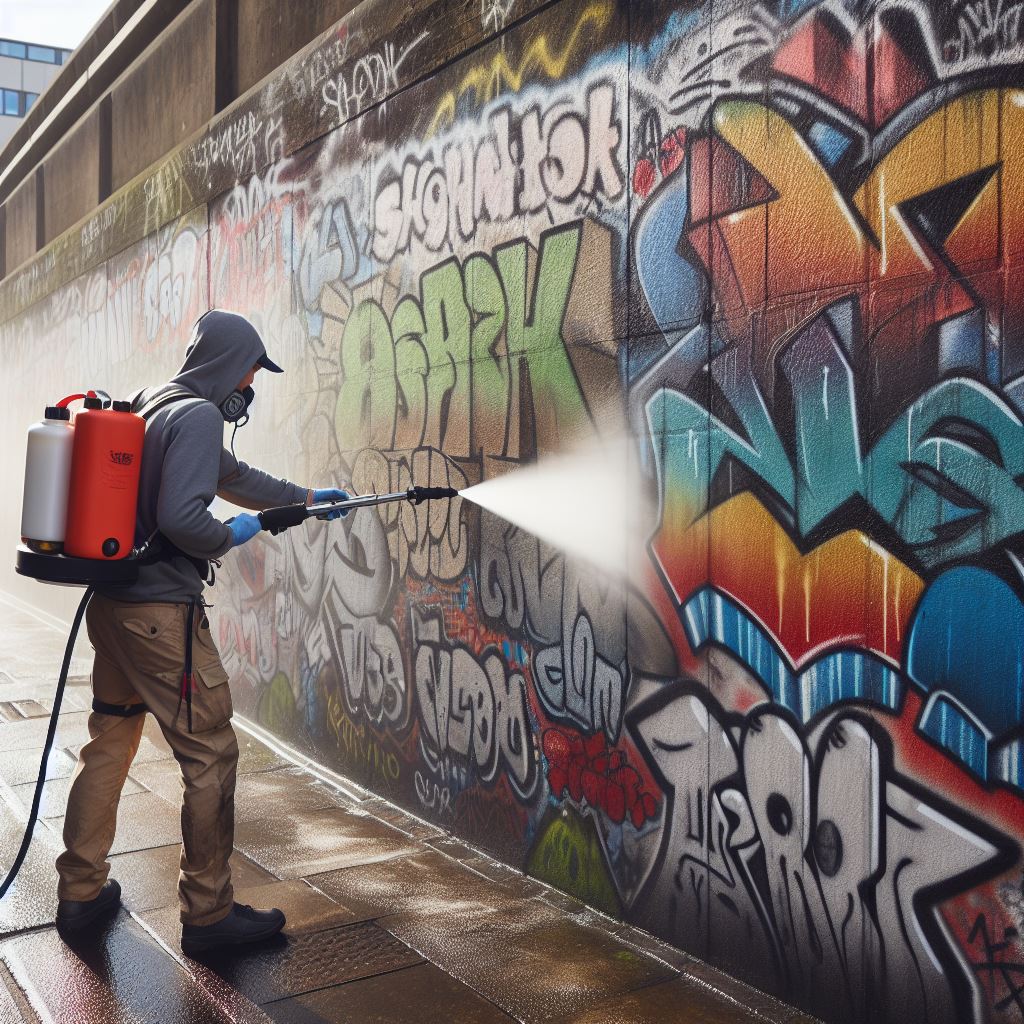How Much Pressure Is Safe When Steam-jet Cleaning?
Few things are worse than deciding to pressure wash the house or the deck and using too much pressure on old wood. You will end up cleaning more of the yard than you originally intended, and you could even replace shingles and deck boards. You will also scare the heck out of yourself when you realize how powerful the little wand is.
When you decide to clean your deck or pressure wash the house before painting, remember to understand how the pressure washer works so you can use it correctly. You will work with the four elements: earth, air, fire, and water.
The first element in pressure washing is pressure or air. Too much pressure on an old deck will cause the wood to fly away in splinters, and that’s not good. Test a small area of the deck to ensure you are using enough pressure to get the job done but not so much that you’re causing more harm than good.
The next element is water, or water flow rate, to be exact. If you use a cold water pressure washer, you must compensate for the lack of heat and increase the water flow. If you are using hot water in your pressure washer, follow the directions for adding the chemicals, or you won’t emulsify the dirt (Earth element) correctly, and it will simply stick to the area you are trying to clean. This is particularly true if you are pressure washing grease from concrete. As a typical rule of thumb, pressure washers work better in hot water (this is where the fire element comes in).

Pressure Washing Safety Tips
After you’ve read the directions and tested the corners of the area you wish to pressure wash, you will need a few tips to get you through the process:
- Wear proper body protection. Accidentally moving your arm too fast and pressure washing your eye is very bad.
- Read the directions. The instrument may look simple, but if you stand too close, you will damage whatever you are trying to clean, and if you stand too far back, it won’t be so effective.
- Work from the top down; else, you will run gook all over the area that you just cleaned, forcing you to go back over. Work smart, not hard, when pressure washing.
- Never aim the nozzle directly at the area you are cleaning. The pressure washer wand should be slightly angled to push the dirt off, not blast it into the material. A pressure washer hitting stucco and brick straight on will make a horrid mess.
- Never aim the nozzle at windows or screen doors. The pressure is enough to break glass and tear the screen door off its frame. You can use the washer to clean screen doors if you have a special light setting and can stand aside from the door.
- Finally, please don’t try to change nozzles or refill the detergent tank while the pressure washer is still on.

Can Pressure Washing Solve The Graffiti Problem in UK Cities?
Cities all across the country have a growing graffiti problem. London suffers more from this form of urban blight than most places. It’s important that your surroundings, home or office, be clean and graffiti-free not only for your personal satisfaction but also to protect the value of your property.
The problem with graffiti cleaning is that graffiti artists are using more and more technologically advanced paints and materials that make removal of the signs of their vandalism difficult for the layman. Even if you could spare the time to try your hand at graffiti cleaning, the chances of your success are slim. With the kinds of spray paints that are now being used for graffiti, soap, water, and cleaning agents are almost useless. Even over-the-counter paint removers may not be effective, and even if they do remove most of the graffiti, cleaning up the stains and splotches left behind can be as tricky as the graffiti cleaning itself. The use of strong chemicals can cause damage to the surface finish of the areas where the graffiti has been done.
Additionally, seeing you toil away trying to remove the graffiti will only encourage the vandals to strike again. The best way to fight London’s graffiti menace is to have all traces of it cleaned up quickly and efficiently by a home cleaning agency. Once the vandals see that their efforts are being swiftly removed from the public eye, their reason for existence evaporates, and they slink off to find some other area to practice their nefarious arts.
How To Choose A Suitable Pressure Washing Contractor?
When contacting a home cleaning agency, ensure it has an exceptional graffiti cleaning service. Because of the types of paints used, graffiti cleaning is a specialized process requiring special tools, chemicals and experience. Look for a cleaning service that has:
* High-pressure water cleaning equipment
* Non-hazardous and non-toxic graffiti removing chemicals
* People experience in the use of the equipment and chemicals
Finding a home cleaning agency with the right experience in graffiti cleaning is vital because the inks and paints used to create graffiti can damage the surfaces used, especially if they are polycarbonate.
While you can try to remove the occasional mark on the exterior of your office or home, be careful that your graffiti cleaning efforts don’t do more harm than good. If you notice that the paints seem to be getting absorbed into the walls or if the colours are spreading, call in an experienced house cleaning agency immediately.

